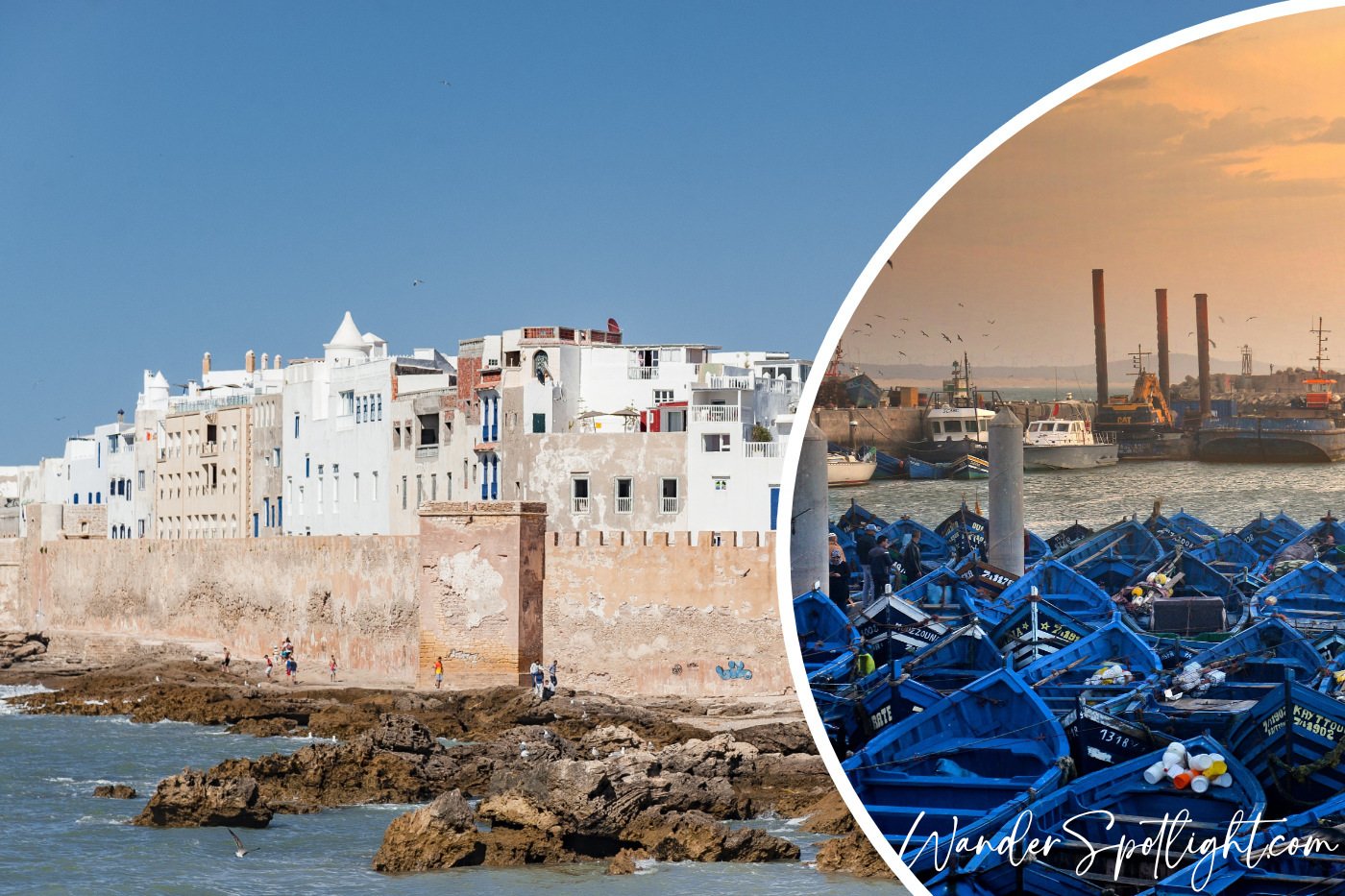Welcome to a windswept realm where the Atlantic’s salty breeze caresses the ancient ramparts of one of the best places to visit in Essaouira Morocco. This coastal gem has captivated the hearts of travelers for centuries, inviting visitors to uncover the must-see places in Essaouira that echo with a tapestry of cultural influences. Originally known as Mogador, this fortified port city offers more than just scenic landscapes. From labyrinthine alleys brimming with hidden wonders to vibrant artisanal souks teeming with life, Essaouira entices explorers seeking the best time to visit Essaouira. Get ready to experience an unrivaled fusion of history and natural beauty as you visit Essaouira Morocco.
Stepping into this enchanting city leads you through centuries of heritage, weaving Arabic, Berber, African, and European influences into a harmonious cultural mosaic. The best places to visit in Essaouira Morocco showcase both the city’s medieval allure and its modern bohemian spirit, resulting in a one-of-a-kind destination. Whether you’re drawn by the rhythmic sounds of Gnawa music, the allure of the bustling marina, or the mesmerizing art galleries, you’ll find a myriad of unforgettable things to do in Essaouira. Prepare to roam the sun-kissed coast, sample mouthwatering seafood, and discover the best places to go in Essaouira—an inviting oasis for wanderers at heart.
Table of Contents
The Old Medina: A Labyrinth of Discovery
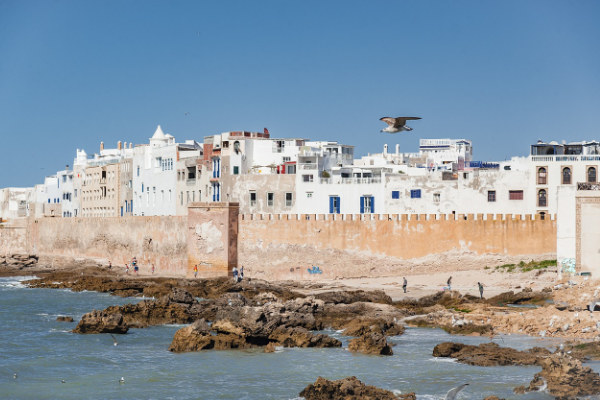
Strolling through the Old Medina is like stepping into a kaleidoscope of ancient stories, the perfect portal to truly appreciate the best places to visit in Essaouira Morocco. I recall my first evening in this maze of narrow alleys—local vendors beckoning, the scent of freshly baked bread mingling with exotic spices, and the soft hum of Gnawa tunes drifting from distant corners. The warmth of the residents made every turn feel like a reunion. This soulful experience felt more like a personal conversation with centuries past, reminding me that to visit Essaouira Morocco is to embrace a heritage shaped by countless generations.
The Old Medina stands out for its mesmerizing blend of Portuguese, Berber, and French architectural elements, forming one of the must-see places in Essaouira. Its distinctive blue doors and whitewashed walls evoke a sense of enchantment at every turn. As you explore, you’ll discover tiny artisanal workshops forging colorful textiles and meticulously carved pieces of art. The medina’s layout is easy to navigate—an intentional design by 18th-century French engineers who sought to create an orderly yet atmospheric haven. This layout not only enhances the charm, but also ensures visitors can explore without feeling overwhelmed, making it one of the best places to go in Essaouira.
Practical Tips & Fees
Walking through the Old Medina is free of charge, making it a budget-friendly highlight among the best places to visit in Essaouira. Keep an eye out for historical plaques offering valuable insights into the city’s storied past. If you wish to dive deeper into its background, consider booking a guided walking tour from local agencies or official municipal resources. For more information on cultural preservation initiatives within the medina, you can consult the Official Moroccan Tourism Board. Remember to bring comfortable shoes, as the medina’s cobblestone paths might challenge your feet. Bargaining at the souks is common, so keep a friendly smile and negotiate politely.
Ramparts and Skala de la Ville: Majestic Coastal Views
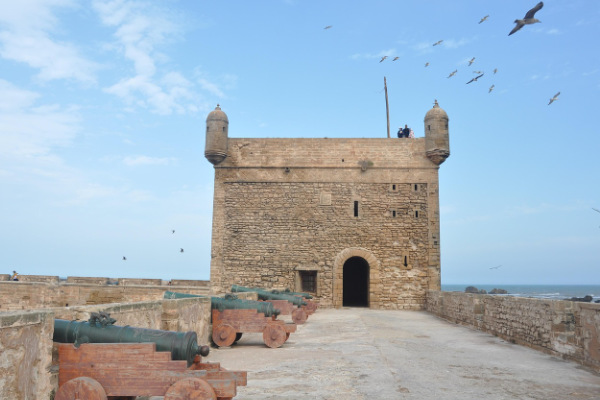
The first time I laid eyes on Essaouira’s ramparts, I felt as if I had stumbled upon a timeless stage set for a grand historical epic. The cries of seagulls, the crash of waves against the fortified walls, and the tang of salty air brought an instant sense of freedom. From the vantage point of Skala de la Ville, the sun shimmered on the Atlantic, igniting dreams of distant adventures. In that tranquil moment, I understood why exploring these ramparts ranks among the best places to visit in Essaouira Morocco—the interplay between ancient fortifications and restless ocean feels downright magical.
Perched along Essaouira’s coastline, these 18th-century walls and bastions offer a panoramic dreamscape that distinguishes them from other places to visit in Essaouira. Cannons still line the ramparts, their metallic bodies a silent reminder of the city’s strategic maritime past. The vantage points grant a stunning perspective, showcasing the azure ocean on one side and the medina’s clustered rooftops on the other. Explore the nooks and crannies of Skala de la Ville to uncover hidden art galleries, where local craftsmen infuse modern creativity with historical nostalgia. Every corner tells a story of resilience and romance, making it a must-see place in Essaouira.
Practical Tips & Fees
Access to the ramparts typically costs a small fee of around 10 Moroccan dirhams (about 1 USD), a worthy investment for panoramic vistas of one of the best places to visit in Essaouira. If you plan your trip around the best time to visit Essaouira, aim for early mornings or late afternoons when the sunlight enlivens the walls’ ochre tones. Photography enthusiasts should note that tripods may require special permission from local authorities. Keep a light jacket on hand, as strong coastal winds can bring a sudden chill.
The Mellah: Exploring Jewish Heritage
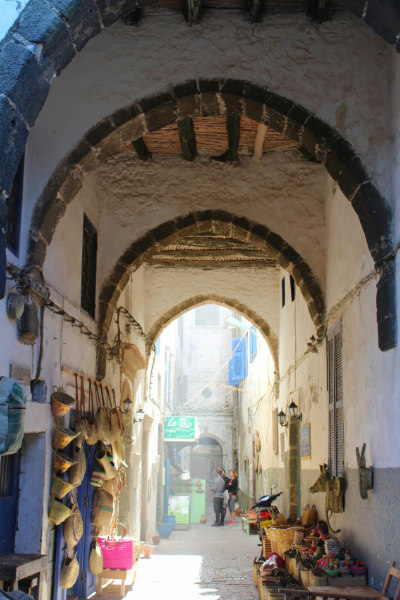
Wandering through the Mellah neighborhood, I felt a gentle hush drape itself over the streets, as if preserving echoes from days gone by. Old synagogues and richly decorated doors beckoned like silent storytellers, hinting at the once-thriving Jewish community that contributed so profoundly to the cultural mosaic here. Locals guided me toward hidden corners where the interplay of bright sunlight and ancient arches stirred a comforting nostalgia. Discovering the Mellah became one of the most genuine things to do in Essaouira—an opportunity to immerse myself in an authentic slice of history and appreciate the spiritual intricacies that shaped this coastal refuge.
The Mellah’s historical significance stems from its role as the Jewish quarter, introducing a unique cultural thread into the tapestry of best places to visit in Essaouira Morocco. Known for synagogue architecture that melds Moorish elegance with Judaic tradition, this enclave hosts relics of a bygone era, including the remnants of the once-vibrant Jewish market. Its location within walking distance of the main medina offers a quieter contrast to the busier lanes, providing a more introspective adventure. Visiting the Mellah grants travelers an intimate understanding of Essaouira’s diverse heritage, an aspect that sets it apart as a must-see place in Essaouira.
Practical Tips & Fees
Entering the Mellah is free, though certain synagogues may request a small donation for upkeep. Because the Mellah is tucked away within the winding medina streets, be prepared to ask for directions or use offline maps. It’s an excellent destination to include if you’re seeking the best time to visit Essaouira in an off-peak season, ensuring a calmer exploration of these sacred pathways during your visit to Essaouira Morocco.
Essaouira Beach: Windswept Adventures
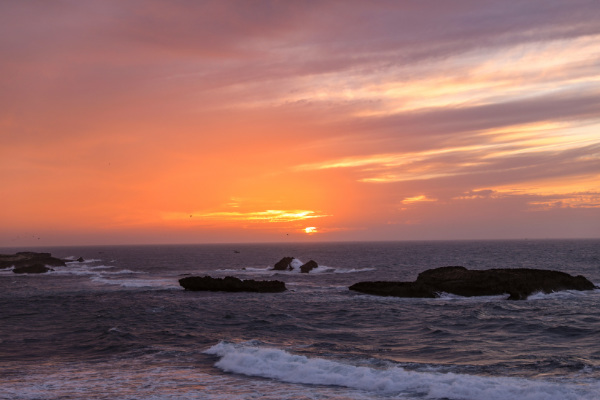
Essaouira Beach instantly became my personal sanctuary—there’s something soul-soothing about the Atlantic breeze tickling your hair while the sun warms your face. A sense of infinite possibility swept over me as I watched windsurfers glide across the waves, their silhouettes weaving gracefully through the golden horizon. Walking barefoot on the soft sand, I breathed in the salty air and felt a rush of freedom unlike anywhere else. The beach isn’t just a pretty stretch of coastline; it’s the heartbeat of one of the best places to go in Essaouira—a place where nature’s forces converge to offer pure, unfettered bliss.
What distinguishes Essaouira Beach from other coastal destinations in Morocco is its perfect synergy of surf, sand, and wind. Ranked among the best places to visit in Essaouira, this shoreline draws kite surfers and windsurfers from around the globe, thanks to ideal wind patterns. For those seeking gentler pursuits, horseback rides along the water’s edge reveal breathtaking vistas of the medina skyline. Vendors selling fresh orange juice and roasted peanuts add a welcoming, local touch. Whether you’re an adrenaline junkie chasing the perfect wave or a laid-back sunseeker craving serenity, Essaouira Beach accommodates all whims, embodying the quintessential places to visit in Essaouira.
Practical Tips & Fees
Access to Essaouira Beach itself is free, but water sports rentals—like kite-surfing gear—come with varying costs (expect around 300–500 Moroccan dirhams for lessons, depending on the package). Do check reputable surf schools for official certifications and safety guidelines. If you’re planning your beach day to coincide with the best time to visit Essaouira, spring and early autumn offer milder breezes. Remember to wear sunscreen; the constant wind can mislead you into forgetting the strength of Morocco’s sun when you visit Essaouira Morocco.
The Port of Essaouira: Vibrant Maritime Charm
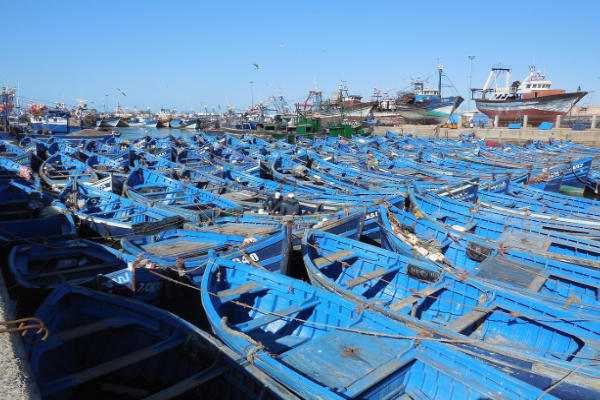
The hum of life in the Port of Essaouira is utterly magnetic. During my first visit, I was entranced by the array of blues: vividly painted boats bobbing against the glimmering backdrop of the Atlantic. Fishermen hauled in their catch amid the melodic squawk of gulls, embodying a timeless daily routine. The aroma of fresh seafood sizzling away at pop-up grills awakened my senses, compelling me to sample the ocean’s bounty. Whether I was wandering along the docks or chatting with vendors, the port offered a glimpse into the city’s heartbeat, quickly sealing its position among the best places to visit in Essaouira.
The essence of this port lies in its authenticity, making it one of the top places to visit in Essaouira for a genuine local experience. Unlike crowded, impersonal harbors, the port here integrates seamlessly with daily life. Skilled craftsmen repair traditional wooden boats in open-air workshops, preserving artisanal methods passed down through generations. Fresh catches of sardines, sea bream, and lobster are readily available for purchase or immediate grilling. The synergy of color, flavor, and tradition creates an immersive maritime spectacle rarely witnessed elsewhere. The Port of Essaouira thus embodies a vital piece of Moroccan heritage, beckoning anyone eager to visit Essaouira Morocco.
Practical Tips & Fees
Exploring the port area is free of charge, but indulging in freshly grilled fish from local stalls comes at variable prices—roughly 50–100 Moroccan dirhams for a satisfying meal. If you wish to hop on a short fishing boat ride, negotiate directly with the fishermen for an agreed fee. For the best time to visit Essaouira and experience the bustling atmosphere, aim for early morning or late afternoon when the catch arrives or departs. Keep some change handy to tip local vendors and boat hands.
Sidi Kaouki: Surf and Tranquility
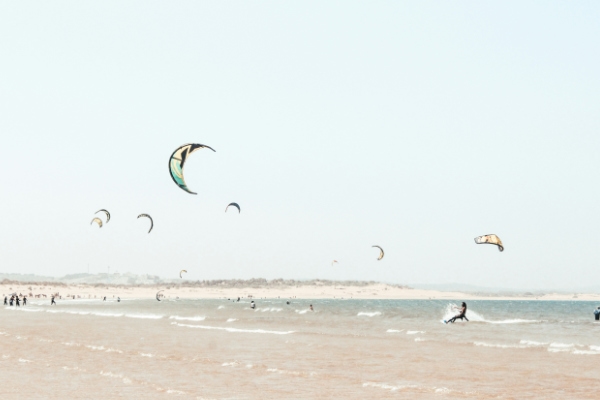
Sidi Kaouki always reminds me of the joy in escaping the everyday grind. When I first ventured beyond Essaouira’s medina, I was greeted by an endless stretch of untamed shoreline. The gentle hush enveloping this rustic beach hamlet was a stark contrast to the lively streets I’d just left. As I meandered along the sandy paths, the hush was broken only by the rhythm of waves. I smiled at the surfers tackling the rolling swells, their laughter echoing the sense of liberation found in this place. For me, Sidi Kaouki is the embodiment of pure coastal bliss—a hidden gem among must-see places in Essaouira.
What sets Sidi Kaouki apart from typical seaside resorts is its raw, unspoiled nature. Miles of open beach invite travelers to bask in solitude, offering a peaceful haven compared to the buzz of other best places to go in Essaouira. Renowned wind conditions make it a paradise for surfers, kite-surfers, and windsurfers. Meanwhile, modest guesthouses and eateries reflect the area’s down-to-earth charm. Expect to see a mix of adventurous backpackers and relaxed families, all drawn by the same elemental appeal. Whether you’re seeking adrenaline-filled activities or quiet reflection by the sea, Sidi Kaouki stands out as one of the best places to visit in Essaouira Morocco for a serene escape.
Practical Tips & Fees
Sidi Kaouki remains relatively undeveloped, so there’s no official entry fee to the beach area. If you’re new to surfing, several local surf schools offer beginner lessons starting at around 250–400 Moroccan dirhams for a two-hour session. For up-to-date information on surf conditions, you can consult the Windguru Essaouira Forecast. It’s wise to arrange transport from Essaouira via shared taxi or bus, as the route can be infrequent. Plan your excursion during spring or autumn—often cited as the best time to visit Essaouira and its surroundings for calmer weather and moderate temperatures, ensuring an idyllic journey to Sidi Kaouki.
Diabat Village: Jimi Hendrix Legends
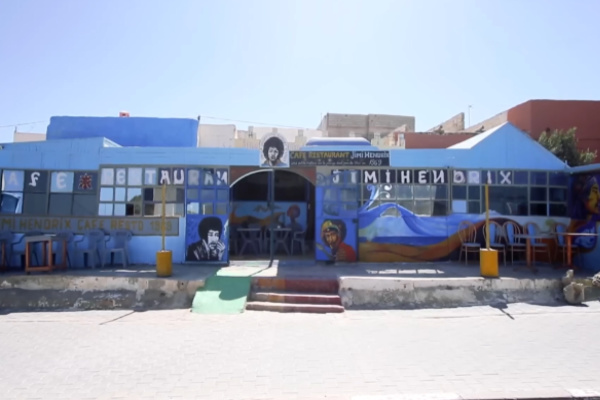
Stepping into Diabat felt like wandering into a storybook where music reverberates through sandy lanes. Legend has it that the iconic Jimi Hendrix spent time here, and the laid-back aura of the village still hums with bohemian undertones. I remember drifting past old stone buildings, half-expecting the echo of a guitar riff to greet me around every corner. Locals were more than willing to share their recollections—tales punctuated by glowing sunsets and star-spangled nights. The village’s unpretentious charm left me feeling a warm nostalgia, as though I had found a secret time capsule preserving the heyday of free-spirited adventure.
Diabat Village captures a colorful slice of music lore, marking it as one of the must-see places in Essaouira for those enchanted by rock legend stories and 1960s counterculture. The rumored stay of Jimi Hendrix has seeped into every nook, inspiring murals, cafés, and local anecdotes that celebrate this nostalgic tale. Beyond the musical allure, Diabat offers secluded beaches, camel rides, and a tranquil vantage point for viewing Essaouira’s skyline from a distance. Visiting this offbeat spot broadens your perspective of things to do in Essaouira, extending beyond the medina to a pastoral setting steeped in artistic free spirit.
Practical Tips & Fees
Diabat Village is free to explore, and there’s no official museum fee, though certain local guides offer tours focusing on Jimi Hendrix’s legendary presence for a small tip or fixed price. Some stable owners charge about 200–300 Moroccan dirhams for horseback or camel treks around the area. If you’re visiting during the best time to visit Essaouira—late spring to early autumn—diurnal breezes keep the climate comfortable, and sunsets here are simply mesmerizing. Bringing a camera to capture glowing twilight skies is highly recommended.
Argan Forest: A Moroccan Natural Treasure
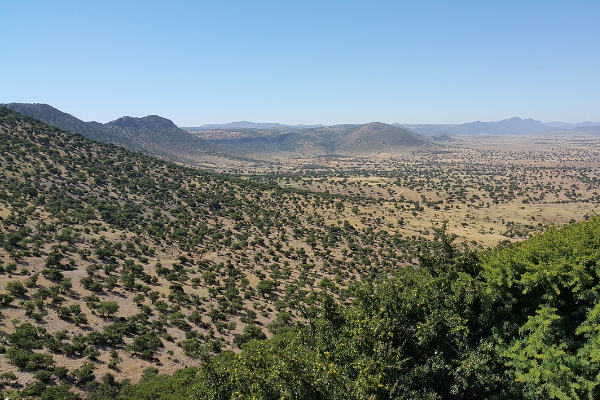
Venturing inland from the coast, I discovered the Argan Forest—an otherworldly domain where gnarled trees twist and tangle under the Moroccan sun. The first time I saw goats perched on branches nibbling at leaves, I gasped in disbelief. The serenity was palpable, punctuated only by the rustling of leaves in the warm breeze. Standing under an ancient tree with thick, knotted bark filled me with wonder for nature’s resilience. Coming from the busy medina, this green sanctuary offered me a moment of pure appreciation—one of those unquantifiable things to do in Essaouira that leave an enduring mark on your soul.
The Argan Forest around Essaouira is among the best places to visit in Essaouira Morocco if you yearn for an authentic foray into nature. Argan trees only grow in this region, making them a rare botanical treasure. Locals harvest argan fruits to create the renowned argan oil, celebrated for its skincare and culinary uses. Watching goats cleverly climb these spiky-limbed trees to snack on fruits is a spectacle found nowhere else. The interplay of sustainable harvesting, community-led cooperatives, and global demand for argan oil has placed this forest at the nexus of ecological preservation and local economic livelihood—truly a must-see place in Essaouira.
Practical Tips & Fees
Entry to the Argan Forest is free, as it’s an open expanse scattered through rural areas outside Essaouira. However, if you join a guided tour of an argan cooperative, prices can range from 150–300 Moroccan dirhams. These tours often include demonstrations and argan oil tastings. For more details on sustainable production and current regulations, the High Atlas Foundation offers valuable information. If you’re pondering the best time to visit Essaouira for an Argan Forest trek, late spring or early autumn strike a balance between milder temperatures and fewer crowds. Don’t forget a hat and sturdy shoes; the Moroccan sun can be quite intense.
Thuya Wood Workshops: Artisanal Marvels
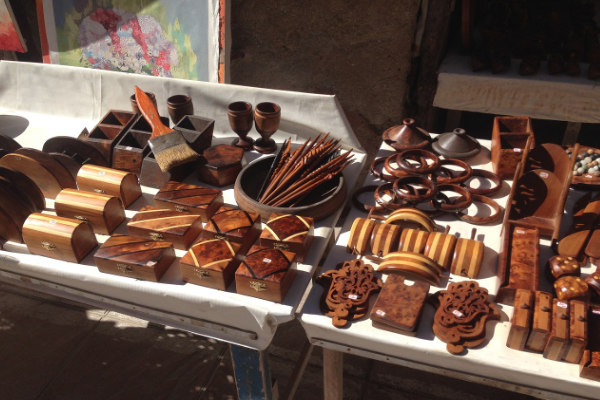
I’ll never forget the first time I stepped into a Thuya wood workshop in Essaouira’s medina. The fragrant aroma of freshly carved wood filled the air, creating a welcoming warmth. Artisans hunched over their tables, eyes focused and hands moving in elegant rhythms. Watching them transform blocks of Thuya wood into polished boxes, intricate ornaments, and decorative furniture sparked a sense of awe. The dedication and passion embedded in each meticulous carving reminded me that visiting these workshops is not merely sightseeing but a journey into the soul of a vibrant craft that has defined one of the must-see places in Essaouira.
Thuya wood, harvested from local conifer trees, boasts a distinctive grain pattern renowned for its swirling, hypnotic designs. Essaouira’s artisans have honed their carving techniques over generations, blending tradition with refined aesthetics to create everything from jewelry boxes to delicate inlays. This artistry sets Thuya wood workshops apart as one of the most fascinating things to do in Essaouira—an immersive celebration of Moroccan heritage. Each item is hand-finished with natural polish, highlighting its unique swirls. Beyond the final product, the entire experience—listening to the rasp of chisels, the subtle hum of camaraderie among craftsmen—makes these workshops a true highlight among best places to visit in Essaouira Morocco.
Practical Tips & Fees
Exploring Thuya wood workshops is generally free; you only pay if you decide to purchase a piece. The cost of smaller items starts at around 50 Moroccan dirhams, but intricate carvings can escalate to several hundred dirhams. Verify the authenticity of your purchase by ensuring it’s genuine Thuya wood and not synthetic. The best time to visit Essaouira’s workshops is midweek, as weekends can be crowded. Take your time to browse and savor the experience—no rush is needed when immersing in this living art.
Hippy Vibes at Café de France: A Retro Retreat
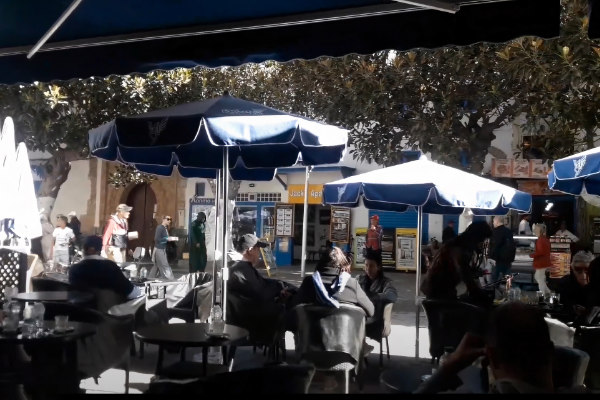
Stepping into Café de France felt like entering a portal to the ’60s. The retro decor—beaded curtains, vintage posters, and weathered walls—evoked a dreamy nostalgia. Vague echoes of Bob Dylan and Janis Joplin wafted through tinny speakers, and I found myself lingering over mint tea, soaking up the laid-back ambiance. It was as though everyone around me moved in slow motion, charmed by Essaouira’s tranquil pace. This unhurried atmosphere provided a welcome break from the hustle and bustle of daily life, instantly making Café de France one of the best places to go in Essaouira for anyone seeking genuine bohemian allure.
While modern cafés and sleek lounges continue to pop up across the city, Café de France remains committed to its relaxed, carefree ethos—a faithful tribute to Essaouira’s 1960s hippie heyday. This authenticity sets it apart from other places to visit in Essaouira. Grab a sidewalk seat, sip a sweet Moroccan tea, and watch local life unfold in the nearby medina. Musicians sometimes drop by, livening the scene with impromptu performances. The café’s bohemian spirit resonates with creative travelers, storytellers, and anyone yearning for an easygoing spot. Simply put, soaking in the good vibes at Café de France is among the most delightful things to do in Essaouira.
Practical Tips & Fees
No entry fee applies—just the cost of your drinks or snacks, typically around 20–30 Moroccan dirhams for mint tea or coffee. If you’re curious about any historical references or want to confirm the café’s legacy. Since it’s located in a popular square, you might encounter hustlers or street vendors, so keep a relaxed but aware attitude. Early afternoons offer a mellow atmosphere, while sunset transitions to a vibrant hush. Heading here is especially rewarding during the best time to visit Essaouira, when the air is warm and breezy.
Local Hammams: Revitalizing Rituals
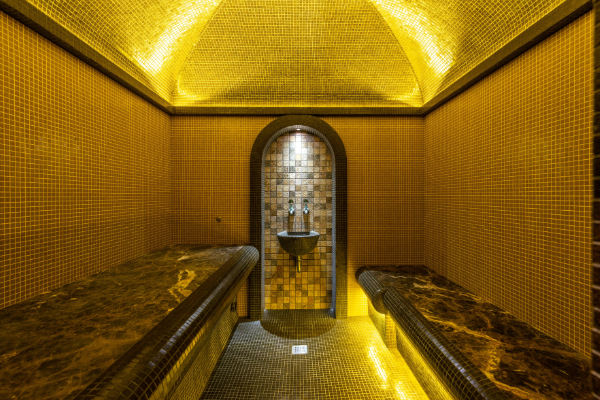
I still remember my initial visit to a local hammam in Essaouira, feeling both curiosity and a slight flutter of nervousness. Once inside, the gentle steam and rhythmic chatter of other patrons soothed my senses. After being guided through a traditional exfoliation and rinsing ritual, I emerged feeling reborn—skin tingling with warmth and spirit elevated. This centuries-old tradition provided a glimpse into Moroccan life that transcended mere tourism. The experience was more than a spa session; it was a cultural immersion that helped me better understand the communal bonds and timeless customs woven into the fabric of must-see places in Essaouira.
Local hammams in Essaouira exude authenticity—far from the glitzy spa experiences found in major tourist hotspots. Here, you’ll discover an intergenerational gathering spot where neighbors catch up, novices learn from elders, and visitors are welcomed into a sacred cleansing ritual. The mix of black soap, Moroccan henna, and argan oil ensures your skin is treated to nature’s bounty, while the communal steam rooms foster an intimate sense of connection. Many consider it one of the best things to do in Essaouira not just for relaxation, but also for a genuine taste of everyday Moroccan life—an essential cultural anchor in the city’s tapestry.
Practical Tips & Fees
Rates at local hammams generally hover between 40–80 Moroccan dirhams, depending on whether you’d like an attendant to scrub you. Touristy or upscale establishments might charge more. Bring your own towel, soap, and shampoo if you prefer specific products. If you’d like to experience minimal crowds, consider going on weekdays, which is also a fine strategy during the best time to visit Essaouira. Embrace the relaxed pace—allow your body and mind to unwind in the gentle steam, immersing yourself in an age-old restorative tradition.
Essaouira Gnawa Music Experience: Soulful Rhythms
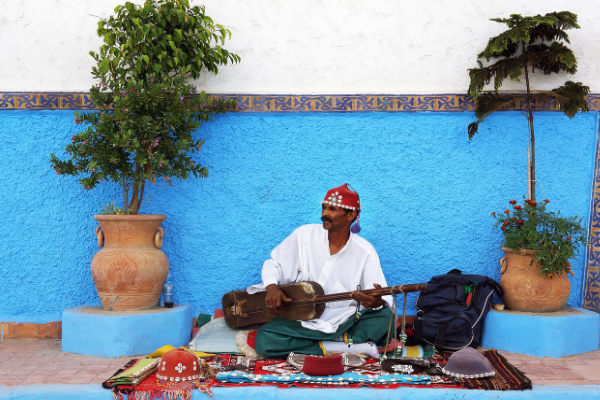
My first brush with Gnawa music in Essaouira was a near-spiritual experience. I wandered into a tucked-away venue where the hypnotic hum of the guembri—a three-string bass instrument—drew me closer. Sitting cross-legged on cushions alongside locals and travelers, I felt the music pulsate through my chest, each note carrying me further away from daily cares. Watching the performers, eyes closed in trance-like devotion, I sensed the deep heritage fueling each chord. It was more than just music; it was a passage into the soulful core of the city. I left that evening transformed, newly aware of Essaouira’s mystical heartbeat.
Gnawa’s roots trace back to the African diaspora, weaving Islamic Sufi traditions and sub-Saharan rhythms into a hauntingly unique musical tapestry. Essaouira has become the heartland for Gnawa, hosting annual festivals that unite master musicians, locals, and curious foreigners. The result is a communal celebration of unity and spirituality, further solidifying the city’s reputation as one of the best places to visit in Essaouira Morocco for cultural immersion. The swirling, repetitive melodies are said to heal the soul, bridging gaps between people and cultures. Engaging with Gnawa music in its birthplace stands out as a must-see experience among the many things to do in Essaouira.
Practical Tips & Fees
While some small-scale Gnawa performances are free in cafés or riads, larger concerts—especially during the popular Gnawa World Music Festival—may require tickets ranging from 50–200 Moroccan dirhams. Consult official schedules via the Essaouira Gnawa Festival Website for the latest lineups and any health regulations. Early summer is often cited as the best time to visit Essaouira for a full-blown festival experience. However, smaller, intimate performances run year-round. If you choose to buy tickets on-site, arrive early to secure good seats. Remember that filming or recording shows might need prior approval, so respect local customs and the performers’ comfort.
Best Times to Visit Essaouira, Safety, Budget, and Travel Tips
Best Time to Visit Essaouira
Essaouira’s coastal climate remains mild and breezy for most of the year, making it one of the best places to visit in Essaouira Morocco at virtually any time. However, wind conditions peak from May to August, attracting kite-surfers and windsurfers who consider this period the best time to visit Essaouira for adrenaline-filled water sports. If you prefer calmer sea breezes and fewer crowds, consider traveling in early spring (March to April) or autumn (September to October).
During these shoulder seasons, hotel rates often dip, and you can enjoy the places to visit in Essaouira with more serenity. Winter (December to February) brings cool, sometimes rainy days, but it can be a great option for budget-seekers looking to visit Essaouira Morocco without the tourist rush. Carefully plan based on your interests—windsurfing, music festivals, or peaceful exploration—to select the perfect season for your journey.
Safety and Security
Essaouira is generally considered a safe destination, offering a relaxed environment. Petty theft can occur in crowded areas, so keep your belongings secured and be mindful of pickpockets, especially in busy medina markets. Women travelers often find the city more comfortable than larger urban centers, though basic precautions still apply. At night, stick to well-lit areas and avoid carrying large sums of cash. Always buy bottled water to avoid digestive upsets, and if you’re unsure about food hygiene in street stalls, observe where locals eat before diving in. Emergency numbers are easily accessed, and police presence in tourist areas is reassuring.
Budget Recommendations
Essaouira caters to all travel budgets, from shoestring explorers to luxury seekers. Dorm-style hostels can start around 80 Moroccan dirhams per night, while a private riad experience can range from 400 to 1,000 dirhams. Food expenses remain moderate if you stick to local eateries—expect around 30–60 dirhams for a simple meal. High-end restaurants near the medina or along the beach can climb to 200–300 dirhams. Bargaining at markets helps stretch your travel funds, making it ideal for picking up souvenirs and artisanal crafts. Keep some cash on hand, as smaller vendors and local taxi services may not accept credit cards.
Transportation Options
For transportation, buses and shared taxis are the most cost-effective ways to get around. Supratours and CTM provide reliable, air-conditioned coaches connecting Essaouira to Marrakech and other Moroccan hubs. Within the city, walking is often the best option, as most places to visit in Essaouira cluster around the medina and port. If you’re venturing farther—say, to Sidi Kaouki—negotiate a fair taxi rate beforehand or consult official price lists.
Accommodation Availability
Accommodation choices abound, including quaint riads, modern hotels, and surf hostels near the beach. Book ahead if you plan to visit Essaouira Morocco during festival seasons or peak windsurfing periods. Lastly, keep in mind local customs: modest clothing is recommended, particularly when entering religious sites or venturing into rural areas. A little effort to learn polite greetings in Darija Arabic or French goes a long way in building rapport with locals.
Conclusion
Essaouira emerges as a timeless tapestry, woven together by its ancient medina walls, rolling Atlantic waves, and the intangible magic that lingers in every cobblestone alley. Whether you’re drawn by its vibrant Gnawa rhythms, the thrill of wind-surfing, or the tranquil rhythms of Diabat Village, there is an allure that makes Essaouira one of the best places to visit in Essaouira Morocco for seekers of both adventure and cultural immersion.
From bustling ports to secret hideaways, each destination reveals a new facet of this coastal jewel. Embrace the breezes, taste the local flavors, and follow the melodies echoing through old lanes. By the time you leave, you’ll understand exactly why this city stands out as one of the must-see places in Essaouira—a radiant crossroad of heritage and joie de vivre that beckons travelers from all corners of the globe.
If Essaouira has captivated your imagination, wait until you explore the rest of Morocco! Check out 11 Spellbinding Places to Visit in Morocco: Uncover the Best Destinations and Hidden Gems for even more enchanting adventures across this vibrant country.
How Many Days to Visit Essaouira?
To fully enjoy the charm and attractions of Essaouira, plan for 2 to 3 days. This timeframe allows you to explore the Old Medina, stroll along the ramparts, relax at Essaouira Beach, and immerse yourself in the local culture, including music, food, and artisanal workshops. If you’re keen on nearby excursions, such as visiting Sidi Kaouki or the Argan Forest, consider extending your stay to 4 days for a more relaxed experience.
Is Essaouira Morocco Worth Visiting?
Absolutely, Essaouira is worth visiting! This coastal gem offers a harmonious blend of history, culture, and natural beauty. Its UNESCO-listed medina, pristine beaches, and lively port create a unique atmosphere that’s both laid-back and vibrant. Whether you’re a history buff, a foodie, or an adventure enthusiast, Essaouira caters to diverse interests, making it one of the best places to visit in Morocco. Its smaller size and friendly vibe also provide a refreshing contrast to busier cities like Marrakech.
Is Essaouira Safe to Visit?
Yes, Essaouira is considered safe to visit. The city has a welcoming atmosphere, and crime rates are low compared to other Moroccan destinations. Petty theft, such as pickpocketing, can occur in crowded areas like the medina, so keep your valuables secure. Travelers, including solo female tourists, generally find Essaouira to be safe and comfortable. Stick to well-lit areas at night, and always use trusted transportation options for excursions outside the city.
Is Essaouira Worth Visiting?
Without a doubt, Essaouira is worth visiting. It’s an enchanting destination where history meets the sea. From exploring the charming medina and experiencing the Gnawa music scene to indulging in freshly grilled seafood at the port, Essaouira offers a range of unforgettable experiences. Its laid-back vibe, combined with scenic beauty and rich heritage, ensures it stands out as one of Morocco’s must-see destinations. Whether you’re seeking a tranquil retreat or cultural adventure, Essaouira is a treasure waiting to be discovered.

